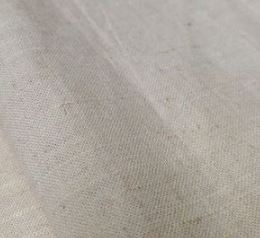About Hemp
Hemp is sustainable as a material.
Sustainable alternatives to conventional products are becoming more in demand than ever as the world grows increasingly aware of environmental issues, and how these issues could greatly impact their lifestyle and survival.
One of the sustainable materials receiving a lot of attention is hemp. With all of its modern potential, it has quickly become a favorite in the eco-friendly fabric world. Not only is it versatile and durable, it is also a now-waste material. Believe it or not, it is even being used in construction.
Every Part of This Plant is Useful
The protein-rich seeds are used for foodstuffs and cosmetic oil. Whole seeds can be given to animals as feeds. The hemp fiber used for paper and textiles comes from the tough stalks.
It is also known as a lightweight durable substitute for plastic and is increasingly being used in manufacturing cars. In addition, compared to many traditional materials, it leaves a significantly lower environmental footprint.
Read on if you want to know more about hemp as a sustainable material, how it is produced, and how it is used.
Hemp is Sustainable Fabric
Hemp is derived from the fabric of cannabis sativa plant and is particularly cultivated for industrial use. Cannabis sativa has been grown for thousands of years for various products from paper to textiles.
Because of its exceptional efficiency as a crop and its eco-friendly processing methods, it has a very low impact on the environment.
Minimal Water Requirement
It does not require a lot of water, unlike conventional fibers like cotton which needs 20,000 liters of water per kg of fabric.
Meanwhile, for only a fraction of that amount, hemp can already thrive. This is what makes hemp ideal for places where there is not enough water.
Low Pesticide Use
Unlike cotton which uses around 16% of the world’s insecticides, it has a natural resistance to most pests which allows it to grow with minimal pesticide.
This means there is reduced chemical runoff into soil and water supplies.
Carbon-Positive Crop
Being a carbon-positive crop, hemp absorbs more carbon dioxide from the atmosphere than it emits. Unknown to many, hemp absorbs four times more carbon dioxide than trees.
This makes it an excellent ally in the world’s fight against greenhouse gas emissions.
How Hemp Fabric Is Made and Produced
Transforming hemp into fabric is both natural and efficient. The hemp stalks go through a process of retting after harvest. During this process, natural bacteria break down the fibers and make it easy for them to separate from the plant.
They are combed and spun into yarn which is woven or knitted into a fabric. This process requires some machinery and labor. However, compared to processing other natural fibers, it is not as chemically intensive.
In addition, hemp requires minimal bleaching and dyeing. Because of this, there are less chemicals involved in the production process, making hemp production one of the most eco-friendly textile processes in the world today.
Where is it Produced?
China, the United States, France, and Canada are the leading producers of industrial hemp, with China being one of the largest suppliers of hemp fabric in the world. Meanwhile, with 1,550 hemp farmers, France is the third largest industrial hemp producer in the world.
How Hemp Fabric Is Used
Aside from being sustainable, hemp fabric is also known for being:
Durable
Hemp is one of the most durable and strongest natural fabric there is, which makes it highly resistant to wear and tear. Unlike many other synthetic materials that deteriorates over time, hemp fabric only softens.
Breathable
Hemp fabric keeps the wearer cool because it is naturally breathable by promoting airflow. In addition, because it wicks moisture away from the skin, it is an excellent material for active wear and summer clothing.
Biodegradable
As a natural biodegradable fiber, hemp fiber decomposes back into earth and leaves no toxic residues. Because it reduces textile waste, hemp is an ideal solution for the growing concern of the fast fashion industry.
These advantages have given hemp fabric a wide range of applications in fashion and beyond.
Uses of Hemp Fabric Today
Some of the most common uses of hemp fabric nowadays are:
Clothing
Its durability, breathability, and anti-microbial properties make it an excellent material for t-shirts, jeans, activewear, and summer wear.
When blended with other natural fibers like organic cotton or silk, it creates a soft and sustainable textile that fits a variety of fashion styles.
Bags or Accessories
Because of its strength, hemp fabric can withstand heavy use making it a long-lasting eco-friendly option for making bags, belts, and hats.
Home Textiles
Because of its natural beauty, hemp fabric is used for bed linens, curtains, towels, and upholstery.
Shoes
The robust and flexible nature of hemp fabric allows it to be made into fashionable, breathable shoes.
Join the Millions of People Who Have Discovered the Beauty of Hemp
As the demand for sustainable materials increases and the trend for sustainable fashion gains momentum, it is clear that hemp fabric’s versatility and environmental benefits make it a clear choice for eco-friendly consumers.
Hemp is Sustainable for our Future
Hemp fabric holds great promise not only for the future of fashion, but also for the future of the planet. Hemp’s role in the fashion industry and in other industries, is a symbol of positive change toward a more responsible and sustainable future.
Discover how hemp can add beauty to your space and change your life today. Visit https://www.madidecor.com.
Email us for product inquiries at info@madidecor.com

